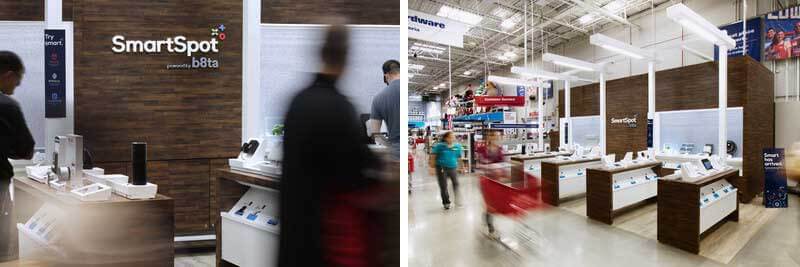How to seamlessly augment the retail experience
Contributor Rohit Gupta predicts the future of in-store interactions which will be enabled by advanced technologies.

But retailers still have a lot to gain by investing in the in-store experience, especially when it comes to brand exposure and collecting customer insights.
Physical stores still offer consumers a place to see and feel the products they are interested in, and at a time where once-popular stores are filing for bankruptcy, retailers need to discern how to leverage such in-store advantages to meet changing shopping behaviors.
To stay in the race, retailers are changing up their store formats to create an experience that entices a stronger and more loyal relationship for the consumer — one that incentivizes consumers to visit retail locations by offering extreme personalization and unique brand experiences.
Here are a few ways retailers can implement their in-store presence to make it unique for the consumer.
Make it immersive
Shopping experiences that use AR/VR and facial-recognition technologies allow consumers to preview products before buying them. A recent study by IDC suggests that the combined global AR and VR market will reach $215 billion by 2021.
Clothing brands like Timberland and Topshop have experimented with a virtual fitting room, and L’Oréal recently purchased a startup called Modiface that lets customers try well-known beauty products via a mobile app, online or in-store AR mirrors.
The key benefit of utilizing these types of emerging technologies is that they allow consumers to be self-served, which reduces operational overhead, and thereby, the associates at the stores can become expert advisors. Also, these solutions help consumers “create the look.” So, instead of picking one item, they can buy a basketful.
Emerging technologies are changing human behavior, especially how we live and shop. AR and VR provide consumers with an opportunity unlike anything that has happened before by providing a real or simulated world around them.
Switch it up
Although shopping online first can sometimes be easier and preferred by most, a number of younger consumers do see the advantage of having a physical store to try out products in real time. Moreover, 98 percent of the Generation Z population still shop in-store, despite being the first “digital native” generation, a National Retail Federation/IBM study found.
However, it is no longer necessary to have all the merchandise on the floor. Instead, stores can be used for samples/trials, and products can then be shipped out. Take, for instance, Bonobos, Warby Parker and Everlane. These stores started online, however, they now have brick-and-mortar stores that offer superb customer assistance that’s driving customer loyalty.
The business benefit of moving toward a showroom style is that retailers can do a lot more with a lot less square footage. The tech gadget retail store, b8ta is a first-rate example of how retail brick-and-mortar showcasing is done. In fact, the company claims it can reduce retail setup cost by 50 percent, and they are partnering with established chains like Lowe’s and Macy’s to help increase their sales.

B9ta’s curated smart home area in Lowe’s stores.
Retail spots still have their allure; however, they must realign their business strategies to compete in today’s shopping environment.
Track your customers’ needs
The million-dollar question for retailers has always been “What do my customers want?” By implementing AI technologies, retailers can more easily and more efficiently predict the what, where and when of consumers’ needs.
Implementing AI can help track customer trends, and by marrying retailers’ first-party data with third-party and macro data, this can create a sophisticated trend analysis. According to Salesforce, sales teams believe there will be a 139 percent growth in AI to automatically recommend products to customers based on their preferences and needs.
Pharmacies now have the ability to accurately predict where there will be a high pollen outbreak and modify their supply chain management (SCM) to ensure over the counter anti-allergy medication is in stock. With the customer data they have on file, they can proactively target preventive steps to their customer database. As such, my agency and other industry peers are using AI/ML to focus on the moment and context that will provide a much richer recommendation for the consumer.
To forge a stronger relationship with the customer, retailers must augment the shopping brand into an immersive, seamless and customized experience. After all, the only constant in retail is constantly changing customer behavior, and leveraging new technologies and insights is the only way to keep up.
Opinions expressed in this article are those of the guest author and not necessarily MarTech. Staff authors are listed here.
Related stories